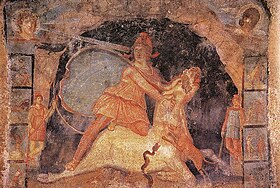- The Nude: a study in ideal form (1956) A.W. Mellon Lectures in the Fine Arts, delivered in 1953.
台灣和中國都有譯本。
https://www.facebook.com/hanching.chung/videos/4284211508256290
British Museum
This stunning statue depicts the Egyptian queen Arsinoe II (c. 316–270 BC). Discovered in the lost ancient Egyptian city of Canopus, this statue is the perfect combination of Egyptian and Greek style. She is the embodiment of Aphrodite, the Greek goddess of beauty and ‘fortunate sailing’. While the choice of a local dark stone and the queen’s striding posture are Egyptian in style, the sensual rendering of her flesh is reminiscent of Greek masterpieces.
Arsinoe II was the eldest daughter of Ptolemy I and married her brother Ptolemy II. This marriage was the first of a series of such unions in the Ptolemaic dynasty. It emphasises the status of the ruling couple as an earthly incarnation of the divine siblings Osiris and Isis, who form the archetype of the royal couple.
See more incredible objects preserved and buried under the sea for over a thousand years in our #SunkenCities exhibition http://ow.ly/wx0v301k0ot
Statue of Arsinoe. 3rd century BC, Canopus. Bibliotheca Alexandrina Antiquities Museum. Photo: Christoph Gerigk. © Franck Goddio/Hilti Foundation.
此尊談的是希臘美神和埃及姿態等的結合,或許不該與北齊之後的"曹衣出水"等混同。
From Wikipedia, the free encyclopedia
Drapery is a general word referring to cloths or textiles (Old French draperie, from Late Latindrappus[1]). It may refer to cloth used for decorative purposes – such as around windows – or to the trade of retailing cloth, originally mostly for clothing, formerly conducted by drapers.
In art history, drapery refers to any cloth or textile depicted, which is usually clothing. The schematic depiction of the folds and woven patterns of loose-hanging clothing on the human form, with ancient prototypes, was reimagined as an adjunct to the female form by Greek vase-painters and sculptors of the earliest fifth century and has remained a major source of stylistic formulas in sculpture and painting, even after the Renaissance adoption of tighter-fitting clothing styles. After the Renaissance, large cloths with no very obvious purpose are often used decoratively, especially in portraits in thegrand manner; these are also known as draperies.
For the Greeks, as Sir Kenneth Clark noted,[2] clinging drapery followed the planes and contours of the bodily form, emphasizing its twist and stretch: "floating drapery makes visible the line of movement through which it has just passed.... Drapery, by suggesting lines of force, indicates for each action a past and a possible future." Clark contrasted the formalized draperies in the frieze at Olympia with the sculptural frieze figures of theParthenon, where "it has attained a freedom and an expressive power that have never been equalled except by Leonardo da Vinci". Undraped male figures, Clark observed, "were kept in motion by their flying cloaks."
Gallery of drapery in art[edit]
Notes[edit]
參考資料竟然是1956年的書名。此處有誤,因為
- The Nude: a study in ideal form (1956) A.W. Mellon Lectures in the Fine Arts, delivered in 1953.
台灣和中國都有譯本。






沒有留言:
張貼留言